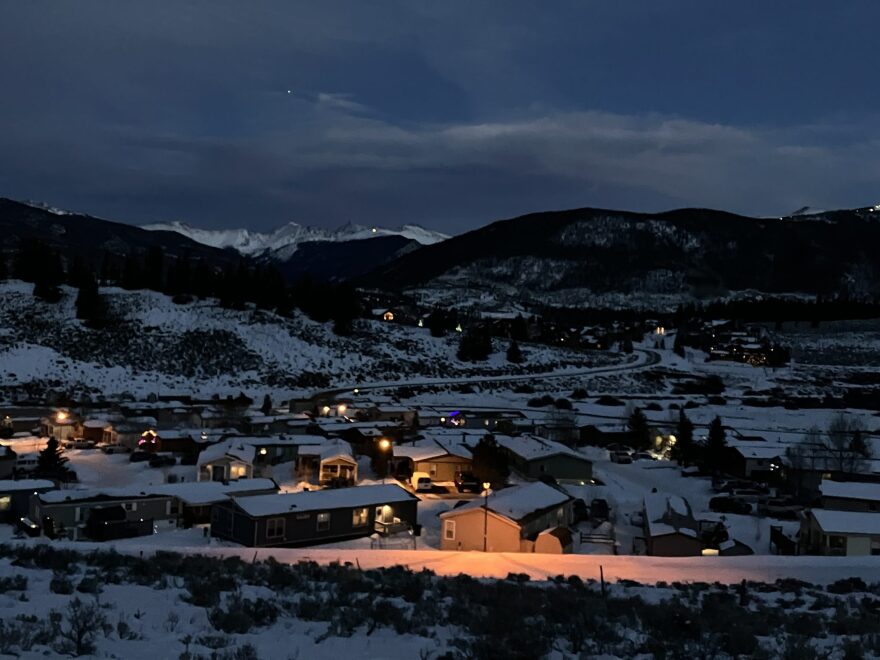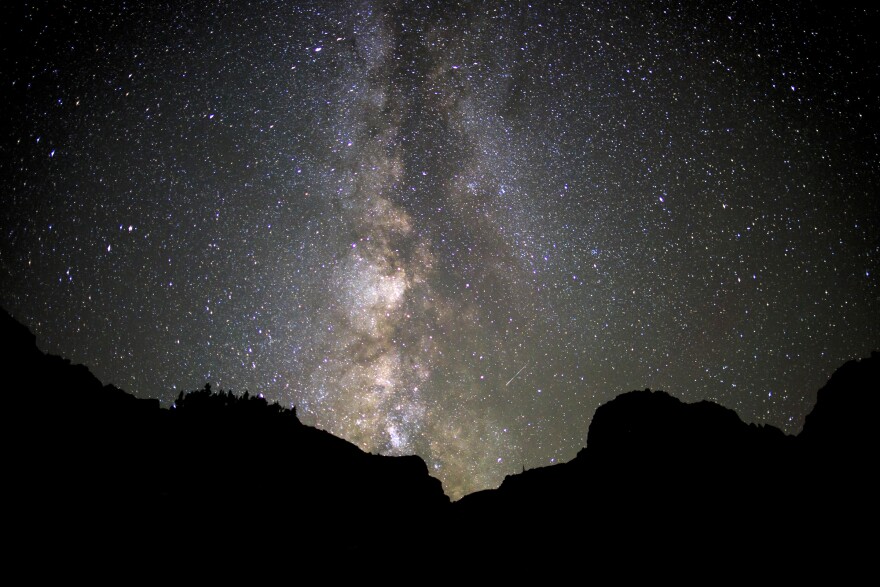While working outside at her Silverthorne business Alpine Gardens in the springtime, Sherie Sobke spends a lot of time listening to birdsong.
American robins will whistle. A warbler – or perhaps a sparrow or towhee – might join in. This time of year, hummingbirds will start buzzing near the greenhouses and ospreys can be spotted nesting along the Blue River, Sobke said.
But knowing that many of those birds migrate nocturnally in the spring, Sobke said it worries her that her business is one of the only dark spots along Colorado Highway 9 in Silverthorne at night.
“We owe the birds better than this,” Sobke said. “The easiest thing everyone can do is turn off those lights overnight so that they can make that journey to nest.”
Sobke is among a growing number of mountain town residents who are calling on their neighbors and local businesses to shut off outdoor lighting as millions of migratory birds take to the night sky this spring.
The peak period for the spring bird migration is ongoing in Colorado with tens of millions of birds expected to pass over the state each night through at least May 18, according to BirdCast, a tool that provides real-time predictions of bird migrations.
From yellow-rumped warblers to ruby-crowned kinglets, green-tailed towhees, red-naped sapsuckers and western grebes, more than 200,000 birds are estimated to have migrated over Summit County some nights this month.
In North America, 70% of birds migrate and more than 80% of those birds that migrate do so at night, most using the stars and moon to aid navigation, according to the National Audubon Society.
Get top headlines and KUNC reporting directly to your mailbox each week when you subscribe to In The NoCo.
But Susan Bonfield, the executive director of Environment for Americas, said artificial light not only blots out the stars, impacting birds’ navigation, but it can distract and confuse birds, tiring them on their long journey and leading them into collisions with buildings and windows.
“It’s a major cause of mortality for birds,” Bonfield said. “So if you care about having birds in your community, singing and nesting, we want them to stop safely and we want them to fly over safely.”

More than half of all bird species are declining, with the U.S. and Canada estimated to have lost 3 billion birds – more than 1 in 4 birds – over the past 50 years, according to a 2022 report from the National Audubon Society.
One study estimated that some 365 to 988 million birds are killed annually in North America when they smash into structures, with about 44% of mortalities from buildings happening at structures between one to three stories tall.
The Audubon Society says neotropical songbirds that migrate long distances, like warblers, tanagers, swifts, swallows and thrushes, are particularly vulnerable to building collisions because they can be disoriented by lights blazing at night.
That’s why turning off outdoor lights is one of the simplest things that people can do to help the migrating birds.
“When we go to bed at night, we’re not really thinking about what’s happening in the sky,” Bonfield said. “But if we think about the sky as a big wildlife corridor, it’s so important to the birds. We need to think about it as we would any other habitat.”
Frisco resident Jeanine Corvetto is among those who have turned off their lights at home and hung bird feeders for the birds traveling thousands of miles. A 20-year resident of the county, Corvetto said she’s seen the night sky increasingly drowned out by artificial light from new development over the years.
But Corvetto said people in Summit County are starting to notice that dark skies are not only good for the birds, “but for the human experience up here.” In recent months, towns like Frisco and Breckenridge have started exploring what it would take to become certified as a dark sky community under a program led by the nonprofit DarkSky International.
“I think it’s something that the community can get around,” Corvetto said. “Everybody would love to have a dark sky. Everybody loves to look at the stars. I think it’s an easy sell. That’s why people live here. I think it can be attractive to visitors as well.”
But Corvetto also said that anytime she goes out on her porch, even on a moonless night, the Christmas lights that a neighbor keeps on 24/7 throughout the year muddy out the starlight. So, there is still a lot of patient work to be done discussing the importance of dark skies at the community level, she said.
While turning off all outdoor lighting is ideal, Corvetto noted that any outdoor lighting can be downcast to be less obstructive on the night sky and that options like timers and motion detectors provide options for those who want lighting in the evening hours or for safety.
“It used to be normal to have a night sky, to not have lights in your windows,” Corvetto said. “Now people are suffering the consequences of their neighbors having their lights on all night when maybe they’re not even there.”
With the thousands of birds passing over Summit County each night during the spring migration, Bonfield encouraged residents to spend time outside where they’ll notice the return of mountain bluebirds and ospreys.
During the day this time of year, lucky birdwatchers might catch a glimpse of some broad-tailed hummingbirds or an American white pelican migrating through the mountains, Bonfield said. Then, at night, residents should turn out their lights to aid the other birds traveling by starlight.
“Go look at your neighborhood when everybody has gone to sleep,” Bonfield said. “If just one person has their lights on at night outside, it’s like ‘How can I get them to turn those off?'”





